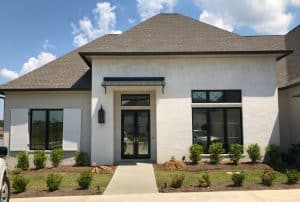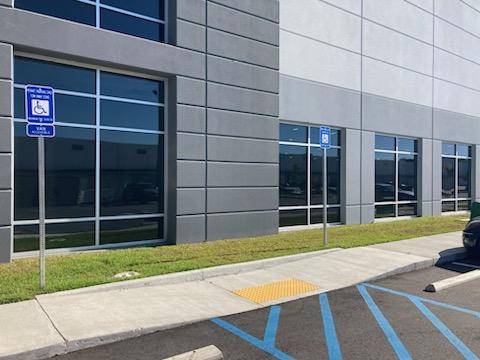Architectural Window Film: Enhance Style and Energy Savings in Your Home
Architectural Window Film: Enhance Style and Energy Savings in Your Home

When you look around your home, do you ever feel like something’s missing? Maybe it’s the way your windows let in too much glare or how the heat seems to sneak in even when your air conditioning is on full blast. Architectural window films could be the perfect solution! Not only do they spruce up your living space with stylish designs and tints, but they also work hard behind the scenes to keep your energy costs down. Imagine enjoying a cozy indoor environment while adding a modern touch to your windows—all without breaking the bank. Let’s dive into how these films can transform your home experience!
Architectural window film enhances style by offering a range of decorative options and tints that improve the appearance of both residential and commercial properties, making them more visually appealing. Additionally, these films contribute to energy savings by reducing solar heat gain, leading to lower cooling costs and increased efficiency of HVAC systems, ultimately creating a more comfortable indoor environment.
Types of Architectural Window Films
Architectural window films come in a variety of types, each designed with specific functionalities that cater to diverse needs. This means whether you’re looking to boost your home’s energy efficiency, add an aesthetic touch, or enhance safety, there’s something available just for you.
Decorative Films
Let’s start with decorative films. These are perfect for anyone wanting to add a bit of character to their spaces without undergoing major renovations. You’ll find an array of patterns, textures, and colors that can mimic the elegance of etched glass.
Imagine a frosted film applied in a bathroom; it provides privacy while still allowing light to filter softly through, making the space feel bright yet secluded.
Similarly, in a business setting, decorative films can give conference rooms a polished look while serving practical purposes like branding or reducing glare. It’s quite remarkable how something as simple as window film can transform an ordinary space into an extraordinary one.
Solar Control Films
Now, shifting the focus to solar control films—these are really the unsung heroes when it comes to energy savings. They are specifically engineered to tackle heat gain from sunlight. By reflecting and absorbing solar energy, these films lower cooling costs significantly during those blistering summer months.
In fact, some solar control films can block up to 79% of solar heat. This kind of reduction not only eases the burden on your air conditioning unit but also leads to lower energy bills and a more comfortable indoor environment year-round. It’s like having your own personal shield against the sweltering heat outside.
Safety and Security Films
When it comes to safety and security films, think of them as an invisible force field for your windows. These films enhance the strength of the glass by holding shards together in case of breakage. This means significantly reducing the risk of injury from flying glass during accidents or break-ins.
Picture a retail store equipped with safety films on its storefront windows—it acts as a formidable deterrent against burglaries while comforting customers who value their safety. Implementing such features is not just about compliance with building codes; it’s about taking proactive steps to ensure everyone feels secure.
With these types laid out clearly, let’s now explore the core benefits these architectural window films offer that make them a valuable addition for any home or property owner.
Energy Savings and UV Protection
One remarkable benefit that comes with installing architectural window films is their ability to significantly reduce energy costs. Imagine sitting comfortably in your living room during a hot summer day, with your air conditioning running efficiently without working overtime—a dream for many homeowners!
Studies indicate that these specialized films can reduce solar heat gain by up to an impressive 79%, which could save you hundreds of dollars on energy bills each year. This translates into a happier wallet and a more energy-efficient household. Considering the peak summer months, when cooling costs tend to skyrocket, incorporating window films can serve as both financial relief and an eco-friendly choice.
The real magic happens when we talk about HVAC lifespan. When windows are unprotected against intense sunlight, heating and cooling systems must work harder to maintain comfortable temperatures. With architectural window films in place, the strain on these systems is considerably reduced. This results in lower monthly energy costs and enhances the longevity of your HVAC unit—saving you future repairs or even premature replacements. Imagine enjoying years of efficient heating and cooling without costly interruptions!
Sustainability doesn’t end at energy savings; it extends by offering substantial protection for your home’s interiors. Architectural window films can block up to 99% of harmful UV rays that would ordinarily seep through your windows. These rays are notorious for causing gradual fading in your furniture, artwork, and carpets. By choosing to apply these protective films, you’re proactively shielding your interior decor from potential damage, preserving its vibrancy for years to come.
Investing in architectural window films isn’t just about enhancing the appearance of your home; it’s also about enriching its value while maintaining an environmentally friendly lifestyle.
Having explored the significant benefits of energy savings and UV protection, we now turn our attention to how these films can enhance both aesthetics and privacy within your living spaces.
Enhancing Aesthetic and Privacy
Architectural window films serve as an effective way to breathe new life into your space, providing aesthetic enhancement while also offering privacy solutions. Imagine an outdated building that hasn’t seen any upgrades in years; adding window film can make it appear modern and chic without the hefty price tag that comes with renovations.
These decorative films come in various patterns and textures, allowing you to align them perfectly with your interior design style—think frosted finishes for bathrooms or subtle geometric designs for living rooms. The transformation can be so striking that it feels like you’ve redecorated entirely.
Beyond aesthetics, the aspect of privacy cannot be overlooked.
One of the key benefits of window films is their ability to maintain natural light while preventing outside visibility. This dual functionality is particularly beneficial in high-traffic areas or private spaces like offices and bathrooms where discretion is essential.
For instance, consider sitting in your home office during a video call; you’d want to retain a level of professionalism while keeping distractions at bay. The right film allows sunlight to filter in without exposing your workspace to passersby, creating a serene environment conducive to productivity.
However, the versatility doesn’t stop there.
Tint Genius provide an impressive range of design options associated with architectural window films—from transparent styles that create a soft barrier to heavily tinted ones that offer substantial coverage from the outside world. This allows homeowners to exercise control over their surroundings, striking a balance between brightness and subtlety based on individual preferences.
For those who value clarity yet desire privacy, semi-transparent films can work wonders by obscuring the view while still letting light bounce around a room.
Remember that selecting the right shade and style doesn’t merely enhance your living or working space aesthetically; it significantly boosts comfort levels and protects valuable furniture from harmful UV rays too.
With a solid grasp of the aesthetics and privacy aspects, we can now shift our focus to effective techniques for installing these films to achieve maximum benefit.
Installation Tips
One of the most important aspects of installing architectural window films is ensuring that the process is as smooth as possible. The first step is to clean the windows thoroughly. This may seem trivial, but windows that are even slightly dirty can lead to poor adhesion and bubbles forming under the film.
You should mix water with a few drops of dish soap and use a clean cloth or sponge to wipe down the surface, followed by a squeegee to remove any stains or streaks, leaving a pristine glass surface ready for installation.
After you ensure your windows are spotless, accurately measuring the glass is essential before cutting the film.
Measure twice, cut once isn’t just an adage; it’s an immensely practical tip in window film installation. By carefully measuring your windows before making cuts, you not only prevent wastage but also guarantee a perfect fit for your film. Ideally, you’ll want to add an extra half inch around all edges—this ensures a slight margin for error during application while also allowing for any potential movement of the film once it’s on the window.
With your window prepped and measurements taken, it’s time to move on to the fun part: applying the film!
Using a squeegee during application is essential for smoothing out any bubbles or wrinkles that may appear. Start from the center of the window and push air towards the edges. The squeegee not only aids in creating a flat finish but also ensures firm contact with the adhesive layer. It’s important to work slowly, taking your time to ensure every inch is firmly pressed against the glass. If you find stubborn bubbles, don’t panic—use a small pin to puncture them gently before squeezing out the air.
Lastly, if tackling larger or more complex projects feels daunting, don’t hesitate to turn to professionals.
There might be situations where considering professional installation makes sense. For oversized windows or intricate shapes, experienced installers can significantly reduce stress and ensure that your window films are applied flawlessly. Their expertise often leads to quicker installations and provides peace of mind knowing that everything has been done correctly from start to finish.
At Tint Genius, we offer professional installation services tailored to your needs—ensuring you receive all the benefits of your new window films without having to worry about whether it’s done right.
With these practical insights at your disposal, you’re now poised to explore how to select the ideal film for your specific requirements.
Choosing the Right Film
When it comes to selecting the perfect architectural window film, understanding your unique needs is key. Your choices should align with your primary goals, whether it’s boosting energy efficiency, enhancing aesthetics, ensuring privacy, or improving security. By identifying what matters most to you, you can eliminate options and hone in on films tailored specifically to your lifestyle.
In my experience, taking a moment to jot down these priorities can be incredibly helpful. For example, if a sleek, modern look is a priority for your home or office, materials like neutral or reflective films might catch your eye. On the other hand, if you’re aiming for better insulation from heat and cold while maintaining visibility, spectrally selective window films deserve closer scrutiny.
Once you’ve pinpointed your requirements, evaluating different features becomes the next logical step.
Assessing Features
Take time to compare what each film has to offer. Not all films are created equal; some prioritize UV protection while others might focus on glare reduction or heat gain minimization.
For instance, if ultraviolet (UV) rays are a concern—which they often should be—look for window films specifically designed to block up to 99% of UV rays. This not only protects your skin but also prevents fading of interiors and furniture. However, don’t get lost in technical specs alone; consider how each film fits into your decor and functional desires. If you prefer a natural view without sacrificing performance, neutral window films could be perfect—they maintain an aesthetic balance while effectively reducing heat.
After narrowing down the options based on features, consultation with industry experts can add another layer of assurance.
Consult Experts
Speaking to professionals can provide invaluable insights that help refine your selection process. The team’s expertise at Tint Genius can guide you through selecting the ideal film based on various factors such as climate conditions and building orientation.
For instance, if a property experiences heavy sunlight throughout the day, a dual reflective window film may not only minimize fading but also significantly enhance comfort inside with reduced glare. So no matter what direction you’re headed—residential, commercial, or industrial—never underestimate the advantage of expert advice tailored to your situation.
By following these steps and drawing from professional insight along the way, you’ll not only find the right fit aesthetically but also optimize the functional benefits of your chosen window film solution. Now let’s assess both the advantages and disadvantages of installing this type of film in your home or business.
Pros and Cons
When contemplating the addition of architectural window film to your home or business, it’s crucial to weigh both its benefits and drawbacks carefully. Among the most notable pros is energy savings. By minimizing solar heat gain, these films can significantly reduce cooling costs, leading to potential energy savings of up to 30%. This keeps your space comfortable while reducing the workload on HVAC systems, extending their lifespan.
In addition to cutting costs, UV protection is another vital perk. The sun’s harmful UV rays can fade furniture, artwork, and flooring over time, but window films can block up to 99% of these rays. Imagine preserving the vibrant colors of your favorite couch or artwork; that’s precisely what a good window film can do for you.
Another appealing benefit is enhanced privacy. For those living in high-traffic areas or close quarters with neighbors, these films provide an added layer of seclusion without sacrificing natural light. This balance allows you to enjoy your space while discouraging prying eyes from peering in.
The aesthetic improvement that comes from window films shouldn’t be overlooked either. They offer an affordable way to update older buildings with a modern touch, enhancing curb appeal while providing practical benefits. Lastly, safety can’t be ignored; safety films help hold glass together during breakage and deter forced entry.
You should also consider the cons of window films for your property, despite their many benefits.
One major consideration is the initial cost. Quality film installation can range from $5 to $15 per square foot; this price can add up quickly for larger windows. If you’re opting for professional installation—which is often recommended for optimal performance—this can increase expenses even further.
Maintenance is another aspect that may require attention. Some films demand periodic cleaning to keep them looking their best, which means investing effort and resources over time. Additionally, films aren’t indestructible; they typically last between 5 to 15 years before needing replacement due to wear and tear from sunlight and weather.
So while a window film upgrade offers numerous benefits, it’s essential to recognize that they aren’t magic solutions that last forever.
By weighing these pros and cons thoughtfully, you’ll be equipped to make an informed decision about whether architectural window films align with your style and needs.
Incorporating architectural window films not only enhances your home but also contributes to energy efficiency and aesthetics. If you’re ready to elevate your space, visit Tint Genius or call us at 678-609-6005 for more information!



